

Khama Rhino Sanctuary Serowe accommodation guide everything you need to know before visiting Khama Rhino Sanctuary Serowe Botswana. Photographs, room types, activities, facilities, location booking information costs rates and prices for your stay at Khama Rhino Sanctuary Serowe, read all the accommodation information about Khama Rhino Sanctuary.
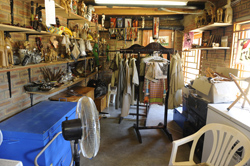
What is the Khama Rhino Sanctuary Trust? - Our Story
In 1989 a group of Serowe residents conceived the idea of a wildlife reserve near Serowe. Serwe Pan, then a cattle post, had been a traditional hunting area teeming with wildlife and the residents wished to re-establish it to its earlier splendour.
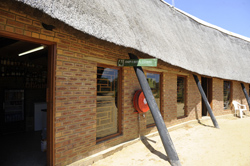
In 1993 the Ngwato Land Board allocated the land around Serwe Pan to the Khama Rhino Sanctuary Trust. The site was chosen due to its excellent habitat for rhinoceros, central location and proximity to a Botswana Defence Force (BDF) base, which provides the Sanctuary with 24hr protection.
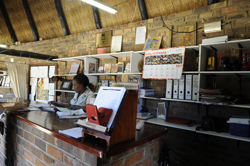
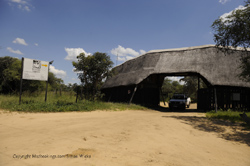
Covering approximately 4,300 hectares of Kalahari sandveld, the Sanctuary is centred around Serwe Pan - a large grass-covered depression with several natural water holes. Serwe Pan provides prime habitat for white rhinoceros and other grazing animals, whilst the denser vegetation in the southern area of the Sanctuary is favoured by browsing animals such as giraffe.
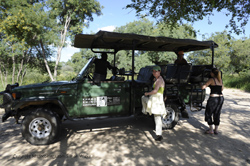
The Sanctuary is a community trust governed by a Board of Trustees who are elected from the local communities of Serowe, Paje and Mabeleapodi. The President of Botswana, HE Lt .Gen.S.K.I. Khama, Paramount Chief of the Bamangwato, is Patron of the Trust.
The Sanctuary lies 25km north of historic Serowe on the Serowe-Orapa road. Serowe, one of the largest traditional villages in Africa , is the birthplace of Botswana 's first President, the late Sir Seretse Khama. Paje and Mabeleapodi are two small picturesque villages within fifteen kilometres of the Sanctuary.
To date, 14 white rhinos and 2 black rhinos have been translocated into the Sanctuary. In February 1993, four rhinos were translocated from northern Botswana . This was accomplished by the Botswana Department of Wildlife and National Parks with the help of the Natal Parks Board. The rhinos were placed in very large bomas which were built by volunteers from the local communities. One of these rhino had been seriously wounded by poachers bullets just prior to capture and died within a month of translocation. Another rhino died in October 1994 despite the best veterinary care. Another young bull was brought to the Sanctuary bomas in May 1994.
A 28km electric fence, sponsored by Debswana and De Beers, was completed in June 1995. All the rhinos were then released from their bomas to roam free within the Sanctuary. Later that month the North West Parks Board of South Africa donated and translocated five more white rhino to the Sanctuary. These were all released from the bomas shortly after their arrival. All the rhino settled well and soon began breeding.
More calves were born in the Sanctuary during 1997, although one has since died due to rough 'horning' by the dominant male. After friction developed between the two mature males it was decided to move the younger one out. He was exchanged for a young female from Kruger National Park in March 1998. While she was acclimatising in the bomas the dominant male became interested in her. He cornered her in the boma and killed her.
1999 saw five more rhinos at the Sanctuary. Three rhinos were translocated from Pilanesburg by the North West Parks Board in July. At the same time a male was translocated from the Sanctuary to Jwaneng in southern Botswana . Two babies were born here during the year.
Two babies were born at the Sanctuary during 2000, two in 2001, four in 2003 and two more in 2004, which brings the total number of white rhino in the Sanctuary to 28. We also have two black rhinos.
Confidence in the Trust and its achievements has been expressed by the Southern Africa Rhino Specialist Group who are keen to establish Khama Rhino Sanctuary as a breeding centre for the re-population of white rhino in Botswana . In addition, Botswana 's Department of Wildlife and National Parks has also re-affirmed its commitment to re-introducing black rhino into the country and using the Khama Rhino Sanctuary for this purpose. The Ngwato Land Board recently allocated the Trust another piece of land (5000 hectares), of which the suitability for the reintroduction of black rhino is currently being assessed.
The Sanctuary is home to other wildlife which have settled naturally or been translocated in: zebra, blue wildebeest, giraffe, eland, springbok, impala, gemsbok, kudu, steenbok, duiker, red hartebeest, waterbuck, warthog, leopard, ostrich, African wild cat, caracal, small spotted genet, black-backed jackal, bat-eared fox, brown hyena. Over 230 bird species have also been identified here including Abdim's stork and bearded woodpecker.